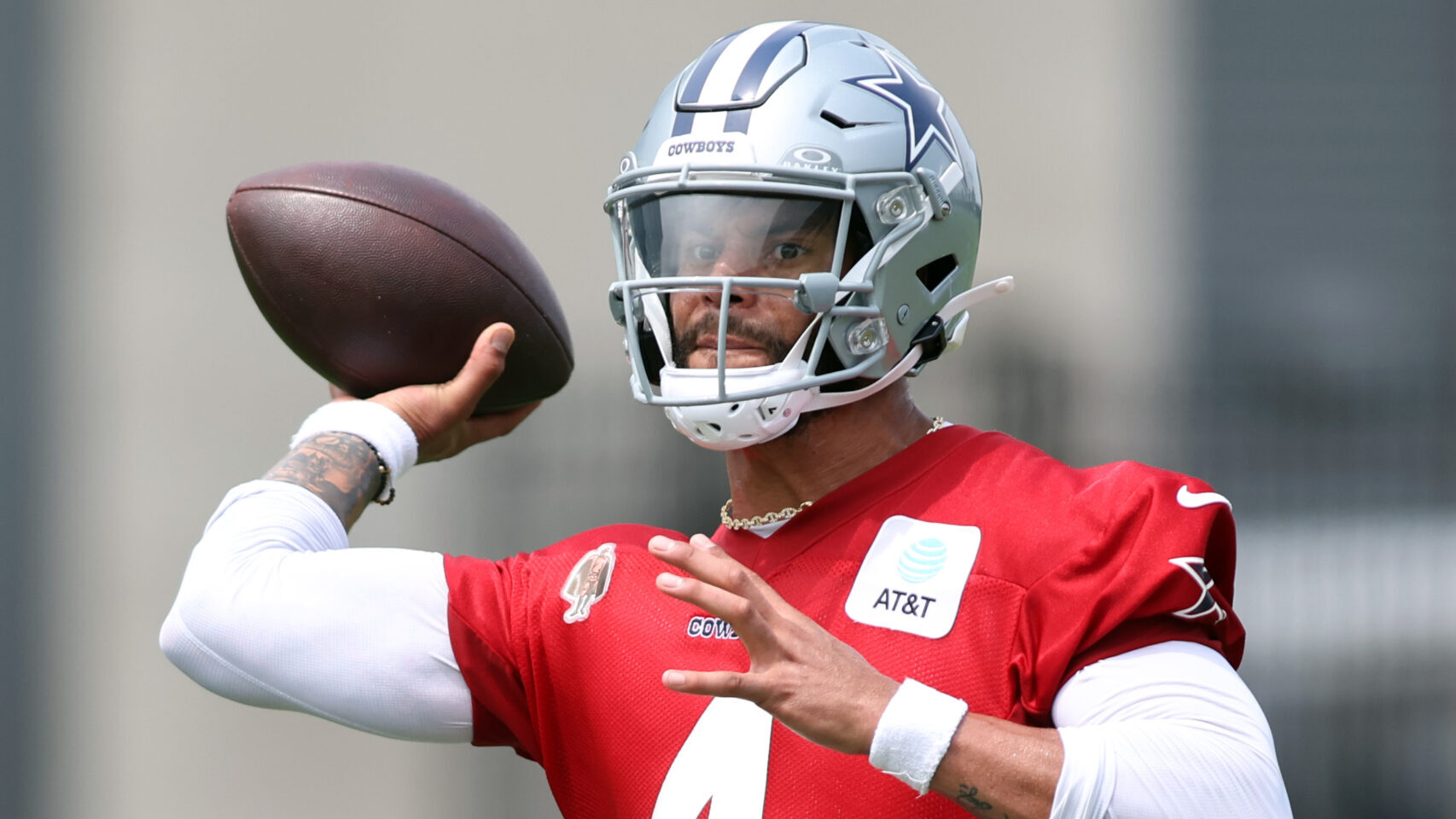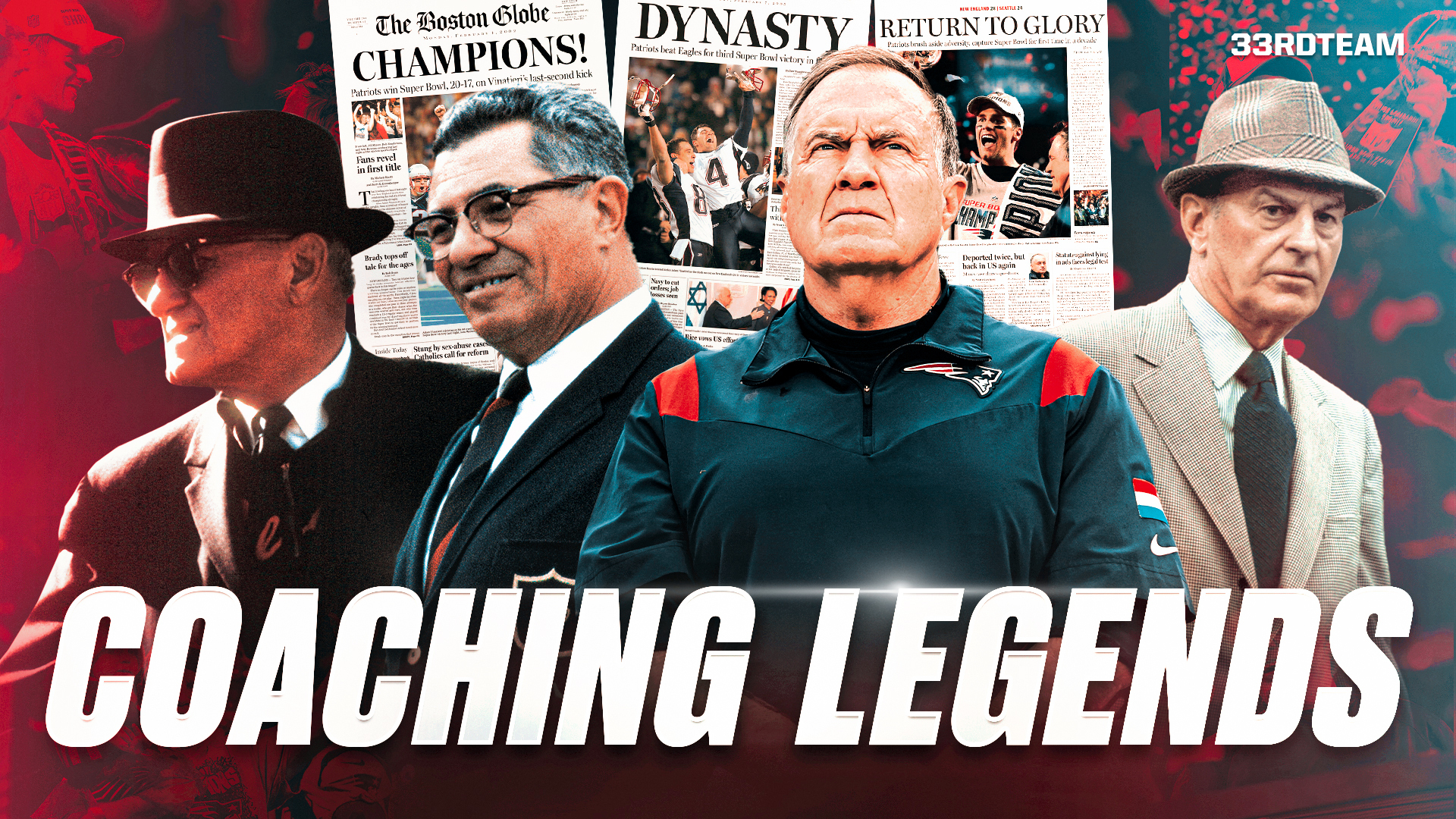Analysis
9/7/22
7 min read
Many Unknowns on Opening Day, But It’s Still Only One Game

The preseason is over. Opening day is upon us.
My mentor, Hall of Fame coach Marv Levy, taught me nearly five decades ago that the preseason is about getting your team ready to play and finding quality players from among the new people on your squad. The regular season is about game-planning, practice preparation and competition on game day.
Another surefire Hall of Fame coach, Bill Belichick, reiterated that philosophy last week when he talked with reporters about his approach to opening day and the first quarter of the regular season. Belichick pointed out that since many starters played very little in the preseason and opponents show very little scheme-wise, the opener carries lots of unknowns.
He said players and coaches must be prepared to adjust to things they may not have anticipated or seen on preseason film. He also pointed out it takes two to three weeks into the regular season for teams to find their most efficient style of play.
That is truer than ever in this age of free agency since there is significant roster change from year to year. For massively overhauled teams, such as the Bears and Jaguars, it might take five or so games to find the right player mix and style of play.
The message to fans is, "Be patient. It is a long season."
Keeping Players Focused
In order to keep players focused and in the moment, many coaches break the season into quadrants. Yes, I know we have 17 games, but this isn’t math class. It’s the NFL. Coaches set goals for their win-loss record, such as 3-1 in the first quadrant. They won't speak about anything beyond those first four games.
They also set incremental statistical goals such as defensive yards allowed or turnovers created, and measure them within those quadrants. The entire purpose is to keep the players focused on what is right in front of them and not on hypothetical “down-the-road” scenarios – the sort of “games” fans like to play. Inside NFL team meeting rooms, the phrase, "On pace for ..." doesn’t exist.
Many head coaches with whom I have worked use specific bits of preseason time to focus on their opening-day opponent. This is particularly true if the opponent has key players and coaching staff returning from the previous season. Coach Belichick is correct: Opening day does carry many unknowns. However, many head coaches believe some mental and physical focus on the opening-day opponent during preseason practice is an aid to preparation.
As a matter of fact, Belichick took his team to Miami five days before the opening game to get it acclimatized to the oppressive tropical climate this time of year.
The reason for what appears to be an inordinate focus on the opener is simple. If you win, it sets a positive mindset for players, fans — and in today’s world the multi-layered — heavily populated media. The fans and media view each game of the season as a standalone. If you won last week, you are on your way to the Super Bowl or, at the very least, the playoffs. If you lost last week, the season is headed for disaster. Of course, half the teams lose on opening day. Many of those teams have gone on to make the playoffs and the Super Bowl.
However, the media and fans aren’t concerned with those historical facts. If you lose the opener, the coach, general manager and organization must work hard to send a positive message to the players to drown out the negative noise.
In the 20th century, the famous "the sky is falling" mentality was a nuisance. In this century, it is a real problem the head coach must recognize and work consistently with his players to defeat.
Hall of Fame coach Bill Parcells has made that point before. If you have team leaders who are mature, that helps greatly. If you have a young, inexperienced team, the noise can cause your team to lose focus on what it takes to win. This is another reason why coaches use the quadrant message to set their team’s agenda. A loss in the opener is not fatal if there are three more games to go in the quadrant.
Making Team Improvements
Quadrants two, three and four, plus the playoffs, carry different challenges. By quarter two of the season, barring catastrophic injuries, you have established a set lineup and style of play. If your team has deficiencies, you still have time to rectify them either through scheme adjustments or personnel moves from within. In relatively rare cases, you can improve from the outside via trade until the Week 8 trade deadline.
With the Colts and Bills, we were very judicious in making trades. We followed the cautionary advice provided to coach Levy and me by another Hall of Fame coach, George Allen: "No one trades anyone that can help them."
But, there were two blockbusters at the trade deadline I was a part of. One with the Bills, and one with the Colts. The price for each player acquired was significant draft choices.
With the Bills, as part of a three-way trade that included the Rams and Colts, we parted with a slew of high picks and running back Greg Bell for the rights to linebacker Cornelius Bennett, who the Colts had made the second overall draft selection in 1987.
In Indianapolis, we sent a third-round choice to Tampa Bay for defensive tackle Anthony "Booger" McFarland. Both deals helped our respective teams reach the Super Bowl.
The "Dog Days"
Quadrant three begins with the ninth game and signals the "dog days" of the NFL season. In major league baseball, the dog days are the month of August. In the NFL, they are the month of November.
Studies show fatigue begins to mount at this juncture, and that can lead to physical downturns and mental staleness. The playoffs seem a long way away, and there is a sameness about the weekly routine. It often leads to a lack of concentration and carelessness, which hurts the ability to play at the high level necessary to succeed in the NFL.
Most teams would prefer that their bye week falls in quadrant three, but that is very often not the case. As clubs approach the end of quadrant three and Thanksgiving, the rookies hit “the wall.” This is not a myth. Anyone who has been around an NFL team on a daily basis has clearly seen it.
The rookies have a slumped posture. They often appear distracted and lack the "go-go" energy they showed in camp and early-season action. The training, strength and coaching staff have to manage their reps. This can help them through this valley in order to get contributions from them down the stretch. By rule, with respect to padded practices, and by choice, many coaches have been known to shorten practice during the third quadrant.
The "Dash for Cash"
Quadrant four begins in December. For most clubs, it consists of five games. It is often referred to by coaches and veteran players as "the Dash for Cash." The run for playoff spots now begins in earnest. There is a psychological lift that comes with the playoff race. You can feel and see it. What was semi-drudgery in quadrant three now is an exciting run down the stretch.
There are seven playoff spots available in each conference, and only the team with the best record gets a bye. As many as 14 teams in each conference may be in the race in December and early January. This amps up the energy for everyone: coaches, players, organizations and fans alike.
With 17 games and all but two teams playing in the wild-card round, the issue of health and fatigue in the postseason comes very much into play. The phrase “load management” is now in the NFL lexicon. We will examine quadrant four, the playoffs, and the issue of load management in a future post.
Meanwhile, enjoy kickoff 2022!
As told to Vic Carucci







